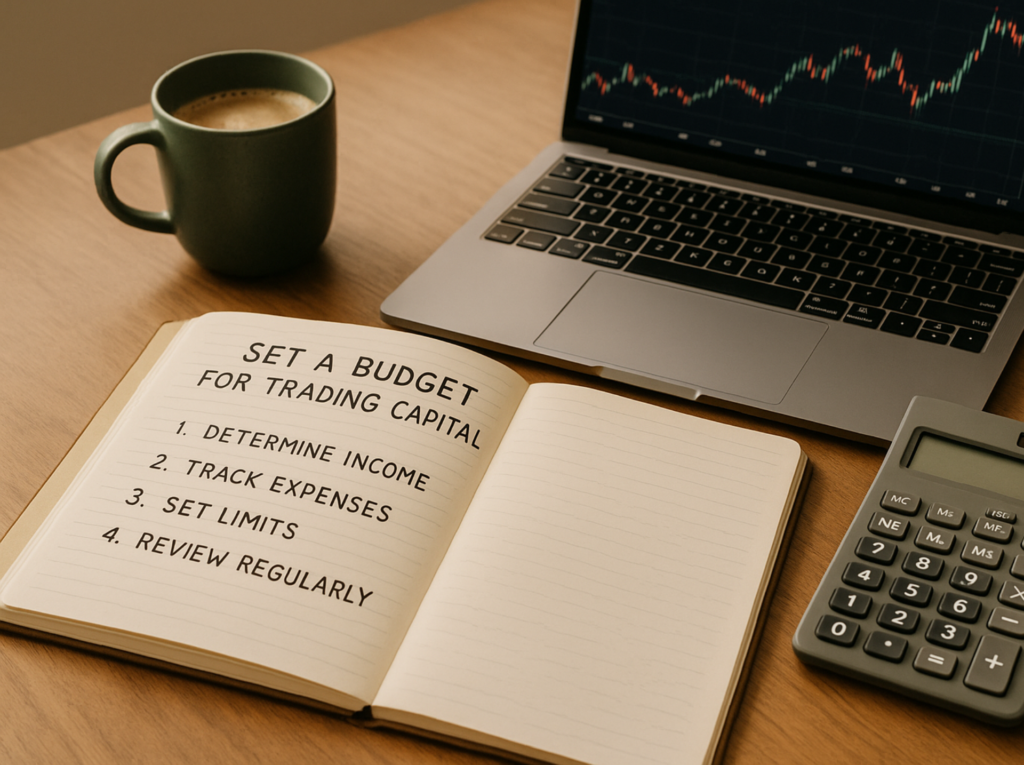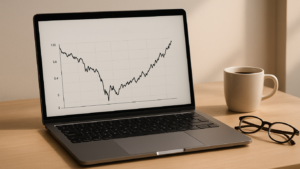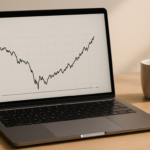Trading without a budget is risky. A clear trading budget helps you control your finances, manage risks, and avoid major losses. Here’s what you need to know:
- Why Budgeting Matters: With 71% of retail traders losing money on CFDs and 77% of Singaporeans feeling financial stress, budgeting is crucial.
- Set Realistic Goals: Define specific, measurable targets and limit daily losses to 1–2% of your capital.
- Know Your Finances: Calculate your liquid net worth and ensure you have an emergency fund (3–6 months of expenses).
- Risk Allocation: Start small – allocate 5–10% of investable assets for trading.
- Track Progress: Regularly review and adjust your budget to align with your goals and market conditions.
A disciplined approach ensures you trade safely and stay financially secure. Always trade with money you can afford to lose.
Know Your Money and Trading Goals
Before diving into trading, it’s important to assess your financial situation and set clear trading goals. This groundwork ensures you can invest without putting your financial stability at risk.
Check Your Available Money
Start by taking a closer look at your finances, especially after major life events like marriage, divorce, or a career change. Begin by calculating your total monthly income, including your primary job, side gigs, investment returns, and any government benefits. Then, list all your expenses – housing, transportation, food, healthcare, personal costs, debt payments, and savings. Compare your actual spending with your budget to spot any gaps.
Understanding your liquid net worth is key to knowing how much you can safely trade. Liquid assets are those you can quickly convert to cash without losing value. These include checking and savings accounts, money market funds, and brokerage accounts. For example, if your liquid assets total S$173,000 and your liabilities are S$168,500, your liquid net worth is S$4,500.
Another important metric is your debt-to-income ratio. Calculate this by dividing your total monthly debt payments by your gross monthly income. Compare it against the 28/36 rule, which suggests keeping total debt below 36% of your income, with no more than 28% allocated to housing. If your debt is high, focus on reducing it before setting aside money for trading.
Once you have a clear understanding of your finances, you can move on to defining your trading goals.
Set Your Trading Goals and Risk Level
Your trading goals should be clear, measurable, and realistic. Avoid vague targets – set specific objectives based on your account size and risk tolerance.
Consider this: 90% of day traders aiming for unrealistic returns lose money in their first year. Successful traders often maintain a win rate between 40–60%. To manage risk, set a daily loss limit of 1–2% of your account value. For example, if you have S$10,000 in capital, your daily loss limit should be S$100–S$200 to safeguard your gains.
When deciding on trade sizes, limit the risk on any single trade to 1–2% of your total capital. Additionally, aim for a risk-reward ratio of at least 1:1.5. This means if you risk S$100, you should target at least S$150 in profit. Tracking your win rates across different strategies can also help fine-tune your approach.
| Risk Management Metrics | Recommended Range |
|---|---|
| Daily Loss Limit | 1–2% of Account |
| Risk per Trade | 1–2% of Account |
| Risk-Reward Ratio | Minimum 1:1.5 |
| Win Rate | 40–60% |
| Maximum Drawdown | 10–15% of Account |
Your goals should match your account size. Smaller accounts (S$750 to S$7,500) might focus on percentage gains rather than dollar amounts. Medium accounts (S$7,500 to S$37,500) can balance growth with careful risk management, while larger accounts (S$37,500 and above) might base position sizes on the overall portfolio value.
Having defined goals helps determine how much capital to allocate for trading.
Review Your Money Needs and Bills
Before setting aside money for trading, ensure your essential expenses are covered and you have an emergency fund in place. Most experts recommend saving three to six months’ worth of expenses. For instance, if your monthly expenses are S$4,000, your emergency fund should range from S$12,000 to S$24,000.
To calculate how much you can allocate for trading, subtract your liabilities from your assets to find your net worth. From your monthly income, identify any discretionary funds. Beginners should consider starting small, allocating only 5–10% of their investable assets. For example, if you have S$100,000 in investable assets after accounting for your emergency fund, you might begin with S$5,000 to S$10,000 in trading capital.
Don’t forget to review your retirement accounts, such as CPF and supplementary schemes, to ensure you’re on track. Experts typically recommend saving 10–20% of your pretax income for retirement. Lastly, check your insurance coverage – life, health, property, and disability – to safeguard against unexpected events that could force you to dip into your trading funds.
How to Allocate Trading Money Safely
Once you’ve evaluated your financial situation and set clear trading goals, the next step is deciding how much money you can safely allocate to trading. This involves understanding what qualifies as risk capital and determining how much of your wealth you’re comfortable risking.
Identify Your Risk Money
Risk capital refers to funds you can afford to lose without jeopardising your lifestyle or financial security. This money should be separate from your emergency savings, retirement funds, and other essential expenses.
Before setting aside risk capital, ensure your emergency fund can cover 3–6 months of living expenses. Only after establishing this safety net should you consider allocating funds to trading. Think of risk capital as money you can part with without affecting your long-term financial goals. Trading with money you can’t afford to lose often leads to emotional decisions, which can result in poor outcomes. As Marc Aucamp from Trade Nation puts it:
“The reality is that with any form of trading, there is always risk involved, and one of the main priorities of traders is to try and keep their losses smaller than their profits.”
Once you’ve identified your risk capital, the next step is determining how much of it to allocate based on your income or net worth.
Decide on a Percentage of Income or Net Worth
A good starting point is to allocate 5%–10% of your investable assets, adjusting as needed based on your financial situation.
You can approach this in two ways: basing your allocation on your monthly income or your total net worth. For income-based allocation, experts often suggest setting aside 10–20% of your income, though for trading, a more conservative approach is usually better. If you prefer a net worth-based method, calculate your net worth and decide on a percentage you’re comfortable risking. For example, if your net worth is S$200,000 and you choose a 5% allocation, you’d allocate S$10,000 for trading.
It’s important to factor in your current financial stage and long-term goals when finalising your allocation. Keep in mind that 82.6% of retail investor accounts lose money when trading CFDs. This statistic highlights why starting small is often the smarter choice, even for those with higher financial capacity.
Understand Singapore’s Trading Rules and Taxes
Once you’ve determined your trading budget, it’s essential to consider local tax rules, as these can impact your net returns. In Singapore, there is no traditional capital gains tax, meaning profits from selling shares and financial instruments are generally not taxable.
However, the Inland Revenue Authority of Singapore (IRAS) uses “badges of trade” to assess whether your trading activities qualify as a business. If IRAS deems your activities to be trading rather than investing, your gains may be considered taxable income. Factors like transaction frequency, holding periods, and profit-seeking intent influence this determination.
For instance, if you frequently buy and sell shares with short holding periods, IRAS may classify your activities as trading. Similarly, a company that sells a property within six months of purchase at a profit may be seen as engaging in short-term trading, subject to tax.
When planning your trading budget, consider setting aside funds for potential tax obligations if your activities might be classified as business income. Additionally, keep in mind the 9% GST that applies to certain financial services.
It’s also crucial to understand the distinction between investment holding and investment dealing. Investment holding refers to owning assets for long-term growth and generating income, while investment dealing involves treating assets as trading stock to generate trade income. Knowing where your activities fall can help you prepare for the right tax treatment.
Given the complexity of Singapore’s tax rules, consulting a tax professional is a smart move to ensure you’re accounting for any potential tax implications in your trading plans.
| Allocation Guidelines | Recommended Range |
|---|---|
| Beginner Traders | 5–10% of investable assets |
| Income-Based Allocation | 10–20% of monthly income |
| Risk per Single Trade | 1–2% of trading capital |
| Emergency Fund Requirement | 3–6 months of living expenses |
Build and Manage Your Trading Budget
Once you’ve set your trading goals and determined your risk tolerance, the next step is creating a detailed budget. A well-structured budget not only safeguards your funds but also helps you navigate the inevitable ups and downs of the market. Here’s how you can organise and manage your trading capital effectively.
Split Up Your Trading Money
Breaking your trading funds into distinct categories can make managing your money much easier. Allocate specific portions for active trading, reserves, and trading-related expenses like education or tools. By doing this, you can avoid overspending and stay prepared for unexpected costs or opportunities. For instance, you might use separate accounts or clearly labelled savings pockets to keep these categories organised.
Set Trade Size and Loss Limits
Defining rules for trade sizes and loss limits is a cornerstone of smart trading. A popular guideline is the 1% rule, which advises risking no more than 1% of your total trading capital on a single trade. While experienced traders might stretch this to 2%, sticking to 1% is safer for beginners.
Brijesh Bhatia from Definedge puts it best:
“Position sizing is the glue that holds together a sound trading system. It ensures you don’t over-leverage or under-commit in any single trade, helping you stay in the game long enough to let your edge play out over a series of trades.”
To calculate your position size, divide your account risk (1–2% of capital) by the trade risk (entry price minus stop-loss).
For daily loss limits, start cautiously with 0.5% to 1% of your total capital. Legendary trader Bruce Kovner also emphasises the importance of planning exits:
“I know where I’m getting out before I get in. Whenever I enter a position, I have a predetermined stop. That is the only way I can sleep.”
Another helpful framework is the 3–5–7 rule: limit individual trade risk to 3% of your capital, overall portfolio risk to 5%, and aim for a 7:1 profit-to-loss ratio. Following such systems can help you stay disciplined, even in volatile markets.
Include Extra Trading Costs
Trading costs can eat into your returns, so it’s essential to account for all related expenses. In Singapore, these include brokerage commissions, clearing fees, trading fees, and GST.
For example, trading Singapore stocks involves a clearing fee of 0.0325% of the contract value and an SGX trading fee of 0.0075% of the traded value. Additionally, GST at 9% applies to commission fees, clearing fees, and SGX trading access fees.
Let’s break this down with a practical example: purchasing 10,000 shares at S$3 each through DBS Vickers would incur S$104.64 in total fees and taxes. This includes the commission, clearing fee, trading fee, and GST. Selling the same position at S$3.30 per share would incur similar fees, reducing your overall gains.
Don’t forget about recurring costs such as platform fees or data subscriptions. Some brokers also charge maintenance or inactivity fees, so it’s worth reviewing your broker’s fee structure carefully.
| Cost Category | Singapore Stocks | Overseas Stocks |
|---|---|---|
| Clearing Fee | 0.0325% of contract value | Varies by market |
| Trading Fee | 0.0075% of contract value | Exchange-specific |
| GST | 9% on fees | 9% on fees |
| Commission | Broker-dependent | Broker-dependent |
Master Systematic Trading with Collin Seow
Learn proven trading strategies, improve your market timing, and achieve financial success with our expert-led courses and resources.
Track and Update Your Budget
Once you’ve set up your trading budget, the real work begins – tracking and updating it. A budget is only as good as the effort you put into monitoring it. Research shows that investors who diligently track their expenses outperform those who don’t by an average of 12% annually.
Compare Actual vs Planned Spending
Keeping tabs on your actual spending versus what you planned is crucial. This simple practice helps you identify gaps early, so you can make smarter decisions. As Vjeko Škarica aptly explains:
“Budget vs actual is where those plans get tested in the real world. The whole story is actually really simple: compare what you had planned to spend or earn with what actually happened.”
Start by recording every trade and tracking metrics like net profit, win ratio, and holding time. While basic tools can get the job done, automated systems offer better precision. Sammy G, a seasoned trader, shares his perspective:
“Keeping a journal of your trades is MASSIVE. It helps to allow you to reflect on strategy, you can also add notes and import your trades to have a detailed overview of your trading day.”
Tracking doesn’t just help your strategy – it can save you money. By paying attention to expenses, you could cut unnecessary costs, which often average around S$1,500 annually. These might include platform fees, data subscriptions, or even the value of time spent analysing markets.
| Aspect | Without Expense Tracking | With Expense Tracking |
|---|---|---|
| Cost Awareness | Limited understanding of trading costs | Clear view of all expenses |
| Decision Making | Focused on gross profits | Informed by net profitability |
| Portfolio Optimisation | May overlook costs’ impact on returns | Adjusts strategy based on cost-effectiveness |
| Tax Preparation | Missed deductible expenses | Accurate record of deductible costs |
This level of detail lays the groundwork for regular reviews and better decision-making.
Update for Financial or Market Changes
Your budget isn’t static – it needs to evolve with financial and market changes. Markets can be unpredictable, and personal circumstances shift, so it’s important to reassess priorities regularly. For instance, a bonus at work might allow you to increase your trading capital, while unexpected expenses could require you to scale back temporarily.
Market volatility, in particular, calls for discipline. Chris Hyzy, Chief Investment Officer for Merrill and Bank of America Private Bank, advises:
“At a time when new information is coming in every hour, it’s important to have a plan and stay disciplined.”
In uncertain times, it’s wise to review your withdrawal strategy, especially if you rely on investment income for daily needs. Ensure your emergency fund is sufficient and avoid knee-jerk reactions to market swings. Instead, adjust your risk levels thoughtfully. For example, during volatile periods, you might reduce position sizes or focus on defensive stocks like utilities or dividend-paying options. Long-term investors could also use strategies like dollar-cost averaging to take advantage of lower prices during market dips.
Schedule Regular Budget Reviews
Consistency is the cornerstone of effective budgeting. Schedule monthly reviews to evaluate your trading data, identify weaknesses, and refine your strategy. These reviews help you stay on track and make adjustments as needed.
Set performance benchmarks that align with your trading goals. For instance, if you’re targeting a 15% annual return, break it into monthly targets and monitor your progress. If you’re falling short, it might be time to tweak your approach or invest in further education.
Leverage software tools to simplify variance tracking and data analysis. Many brokers in Singapore provide detailed transaction reports that can be easily exported to spreadsheets or trading journals, saving time and reducing errors.
Finally, don’t underestimate the value of external feedback. It can help you identify blind spots and improve your approach. Regular reviews not only keep you accountable but also ensure your strategy evolves with the ever-changing market landscape.
Use Education for Better Trading
Starting with a trading budget is a good first step, but education is what takes your trading to the next level. Without proper knowledge and training, even the best trading plans can falter due to emotional mistakes. A solid educational foundation helps you make the most of your capital while keeping unnecessary risks in check.
Learn Systematic Trading Methods
Systematic trading is all about using pre-defined rules to guide your trading decisions. This method relies on data and discipline, helping traders avoid emotional pitfalls. By incorporating technical analysis and backtesting, it becomes easier to identify potential risks and opportunities. With clear goals and risk controls in place, you can ensure your capital is used efficiently across different asset classes.
Use Collin Seow Trading Academy Resources

To master systematic trading, tapping into reliable resources is essential. For Singapore traders, the Collin Seow Trading Academy offers tailored educational tools and programmes that focus on disciplined trading practices.
One of their standout offerings is the Systematic Trader Program (SMT), which has received over 1,400 5-star reviews on Seedly. This programme is designed to help traders eliminate emotional decision-making and adopt a process-driven approach:
“A system that simply works and aims to take all emotions out of your trades. Make profitable trades regardless of market direction”.
The results speak for themselves. For instance, one trader achieved over 100% returns in just eight months, while another maintained an 80% success rate on trades in the Hong Kong market.
The academy also provides free resources like the Market Timing 101 e-course and Systematic Trading Profits webclass. For those seeking more in-depth support, paid programmes include mentorship and access to alumni networks. Additionally, the TradersGPS system offers real-time insights, such as a November 2025 trade recommendation that delivered an 11.5% gain in just six days.
Collin Seow himself emphasises the importance of focusing on the process rather than the outcome:
“Trading is like a sport – focus on the process, and results will follow”.
Over the past seven years, the academy has trained 60 batches of SMT participants, continuously refining its approach to meet the needs of all traders – whether you’re starting with just S$5,000 or managing larger sums.
Key Points for Your Trading Budget
Creating a trading budget requires discipline and thoughtful planning. Think of trading as running a business – every decision should align with your broader trading goals.
Start by setting clear risk limits and spreading your investments across different assets. This reduces the impact of sector-specific losses and helps keep your portfolio steady during market downturns. Remember, risk tolerance is key. With 82.6% of retail investor accounts losing money when trading CFDs, prioritising capital preservation is non-negotiable.
Your trading plan should outline specific entry and exit strategies based on logical, objective analysis – not emotions. Include clear profit targets and use stop-loss orders to safeguard your capital. This structured approach naturally complements the budget tracking practices mentioned earlier.
One golden rule: never trade with money you can’t afford to lose. Your trading funds should come from discretionary income – not emergency savings or essential expense reserves. Successful traders often keep detailed records, stick to their risk limits, and continuously tweak their strategies to improve.
Trading isn’t gambling with your financial future. Stick to a systematic, disciplined approach and adjust your budget as the market shifts.
FAQs
How can I calculate my liquid net worth, and why is it crucial for setting a trading budget?
To figure out your liquid net worth, start by adding up your liquid assets – things like cash, stocks, and bonds that can be quickly converted into cash. Then, subtract your liabilities, which include loans or any outstanding debts. The result is the amount of money you have on hand without needing to sell long-term investments or fixed assets.
Knowing your liquid net worth is crucial when planning a trading budget. It gives you a clear idea of how much money you can comfortably put into trading without putting your overall financial health at risk. This way, you can handle risks better while staying focused on achieving your trading objectives.
How do I decide how much of my investable assets to use for trading?
When deciding how much of your investable assets to set aside for trading, start by assessing your risk tolerance – essentially, how much you can afford to lose without jeopardising your financial security. Then, think about your financial goals. Are you aiming for quick, short-term profits, or are you focused on building long-term wealth? These goals will shape your approach.
You’ll also want to evaluate your available resources. Make sure you have enough liquidity to cover emergencies and other financial obligations before committing funds to trading.
Don’t forget to consider market conditions and how well you understand trading strategies. Gaining knowledge from reliable sources, like those offered at Collin Seow Trading Academy, can help you make better decisions. The golden rule? Only trade with money you’re comfortable losing, and ensure your trading budget fits within your broader financial plan.
How can I track and adjust my trading budget to stay aligned with changing financial goals and market trends?
How to Track and Adjust Your Trading Budget
To stay on top of your trading budget, it’s important to regularly revisit your financial goals and keep an eye on the latest market trends. Ask yourself if your current budget still aligns with what you want to achieve, and tweak it if necessary.
Using tools like spreadsheets or financial software can make monitoring your trading performance much easier. Keep your records updated to reflect any changes in your income, expenses, or shifts in the market. Staying organised isn’t just a good habit – it’s what helps you make smarter decisions and ensures your trading capital is working as hard as you are.












